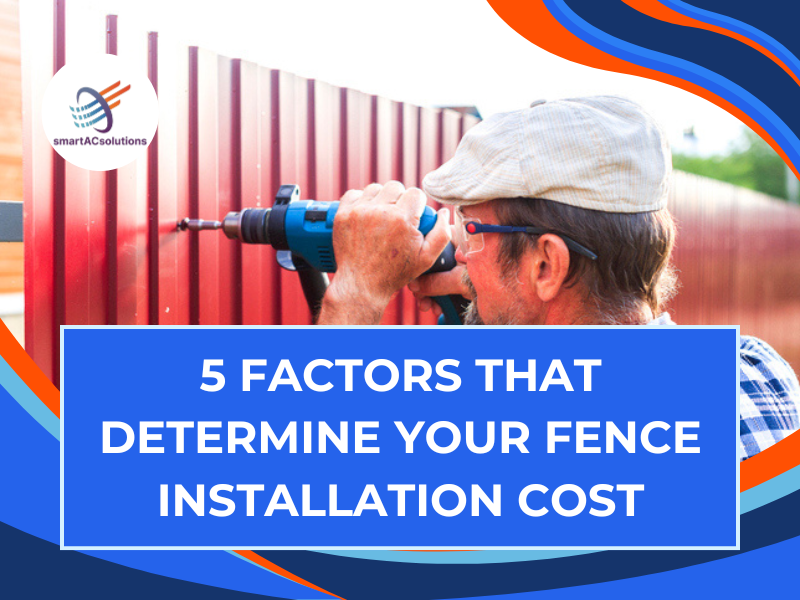Hey there, homeowner! A well-installed fence can be a great addition to your property. It can boost your home’s value, keep your family safe, and create a chill outdoor space. But before you dive into this project, it’s important to understand the factors that influence fence installation costs. From materials to labor, five key factors can significantly affect the price. I’ll share some tips and insights based on my own experience, as well as information from industry experts, to help you make informed decisions and plan your budget accordingly. In this guide, we’ll cover:
- Materials: The impact of different materials on cost
- Size and Length: How dimensions affect the price
- Height: The cost implications of taller fences
- Style and Design: The influence of aesthetics on pricing
- Labor: Factors affecting the cost of installation
Let’s get started!
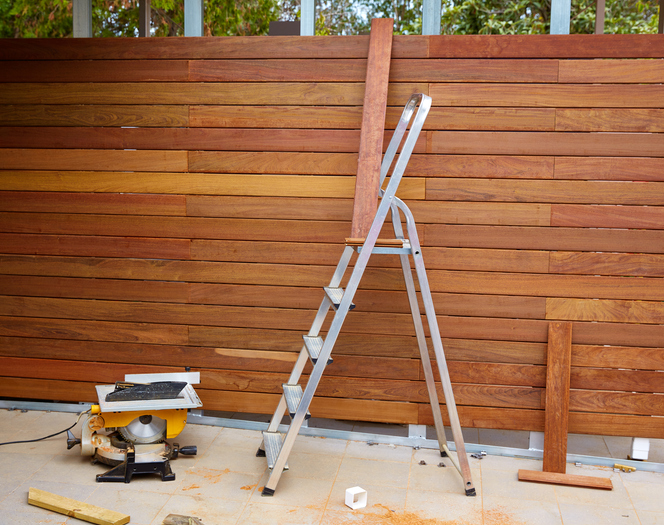
1. Material Selection: A Cornerstone of Fence Installation Costs
As a homeowner myself, I’ve seen firsthand how the material you choose for your fence can significantly impact both its appearance and cost. Here’s a breakdown of common materials and their associated costs:
Wood: A Timeless Classic, But Consider the Cost
Wood fences offer a timeless, natural look that complements many home styles. They come in a wide variety of styles, from rustic picket fences to elegant privacy fences. However, wood fences can be more expensive than other materials, especially if you opt for premium hardwoods like cedar or redwood.
Factors affecting wood fence costs:
- Wood type: The type of wood used, such as pine, cedar, or redwood, can significantly impact the cost.
- Personal Insight: I’ve found that cedar and redwood are generally more durable and require less fence maintenance, making them a worthwhile investment in the long run. According to the Wood Fence Guide, cedar and redwood are naturally resistant to rot and decay, making them a popular choice for outdoor structures.
- Treatment: Treated wood is generally more durable and may cost slightly more.
- Style: The complexity of the design, including the number of posts, rails, and pickets, can influence the cost.
- Finish: The type of finish applied to the wood, such as paint or stain, can add to the overall cost.
Vinyl: A Durable, Low-Maintenance, and Cost-Effective Option
Vinyl fences are a popular choice due to their durability, low maintenance, and wide range of colors. They are often more affordable than wood fences, especially in the long run, as they require minimal upkeep.
Factors affecting vinyl fence costs:
- Thickness: Thicker vinyl fences are generally more durable and may cost slightly more.
- Style: The complexity of the design, including the number of rails and pickets, can influence the cost.
- Color: Certain colors may be more expensive due to the manufacturing process.
Metal: Strong, Secure, and Potentially Pricey
Metal fences, such as chain-link, wrought iron, or aluminum, offer excellent security and durability. They are a popular choice for commercial properties and homes in high-crime areas.
Factors affecting metal fence costs:
- Material: The type of metal used, such as steel or aluminum, can affect the cost.
- Style: The complexity of the design, including the number of posts, rails, and pickets, can influence the cost.
- Finish: The type of finish applied to the metal, such as powder coating or galvanizing, can add to the overall cost.
PVC: A Modern and Budget-Friendly Alternative
PVC fences are a relatively new option that combines the durability of vinyl with the aesthetics of wood. They are often more affordable than wood fences and offer a wide range of styles and colors.
Factors affecting PVC fence costs:
- Thickness: Thicker PVC fences are generally more durable and may cost slightly more.
- Style: The complexity of the design, including the number of rails and pickets, can influence the cost.
- Color: Certain colors may be more expensive due to the manufacturing process.
Bamboo: An Eco-Conscious Choice with Cost Considerations
Bamboo fences offer a unique, eco-friendly alternative with a natural aesthetic. They are often more affordable than wood or vinyl but may require more maintenance.
Factors affecting bamboo fence costs:
- Bamboo type: The type of bamboo used, such as Moso bamboo or Guadua bamboo, can affect the cost.
- Treatment: Treated bamboo may be more durable and may cost slightly more.
- Style: The complexity of the design, including the number of posts, rails, and pickets, can influence the cost.
When choosing a fence material, it’s important to consider your budget, desired aesthetic, and functional needs. By understanding the factors that affect fence costs, you can make an informed decision and select the best material for your property.
For more information on fence materials and their costs, check out these helpful resources:
- Fence Material Comparison Guide: https://www.fieldbin.com/blog/fence-material-comparison-wood-vs-vinyl-vs-metal/
- The Pros and Cons of Different Fence Materials: https://irishiron.com/blog/vinyl-fences-vs-wood-fences-vs-iron-fences/
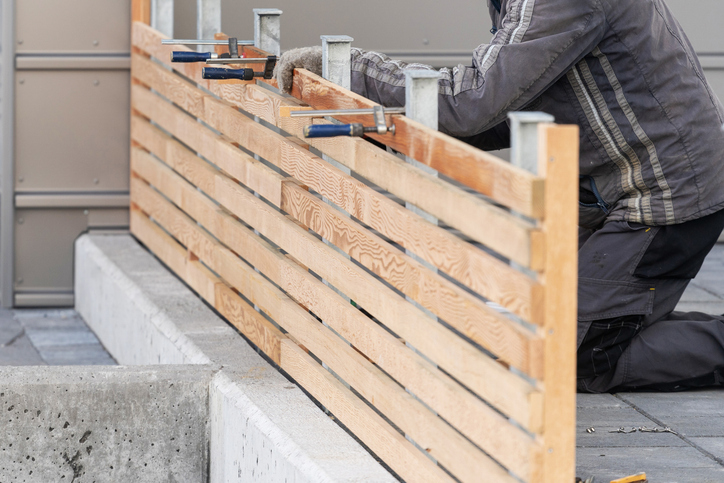
2. Fence Size and Length: Scaling Your Project and Its Impact on Cost
As a homeowner myself, I’ve learned firsthand that the size and length of your fence can significantly impact the cost of installation. Larger fences require more materials and labor, leading to higher expenses. Here are some key factors to consider:
Property Size and Fence Length: The Bigger the Land, The Bigger the Cost
The size of your property will determine the overall length of the fence. A larger property will require a longer fence, which will increase the cost.
- Acreage: The amount of land your property covers will directly influence the fence length.
- Shape: Irregular-shaped properties may require more fencing than rectangular properties.
Desired Perimeter: Balancing Coverage and Costs
The amount of your property you want to enclose will influence the length of the fence. Consider whether you want to fence in your entire property or just specific areas, such as your backyard or garden.
Fence Height and Costs: The Higher You Go, The More You Pay
Taller fences require more materials and labor, increasing the cost. However, taller fences can also provide greater privacy and security.
Factors affecting fence height:
- Local regulations: Some cities or towns have rules about how tall fences can be.
- Desired level of privacy: Taller fences offer more privacy.
- Security concerns: Taller fences can deter intruders.
Additional Considerations
- Gates: The number and size of gates will also affect the cost of installation.
- Existing structures: If there are any existing structures, such as sheds or garages, that need to be fenced around, this will increase the cost.
- Terrain: The type of land your property is on can also impact the cost of installation. For example, a hilly or uneven terrain may require additional labor and materials.
As a homeowner myself, I learned that the size and length of my fence significantly impacted the cost of installation. When I was planning my project, I initially wanted to fence in my entire backyard. However, after considering the cost, I decided to focus on the areas that needed the most privacy and security.
By carefully considering these factors, you can get a better estimate of the size and length of your fence and the associated costs.
For more information on fence installation costs and planning, check out these helpful resources:
- Fence Installation Cost Calculator: https://www.homewyse.com/services/cost_to_install_fence.html
- Fence Installation Cost Breakdown: A Budget-Friendly Guide: https://costguide.com/
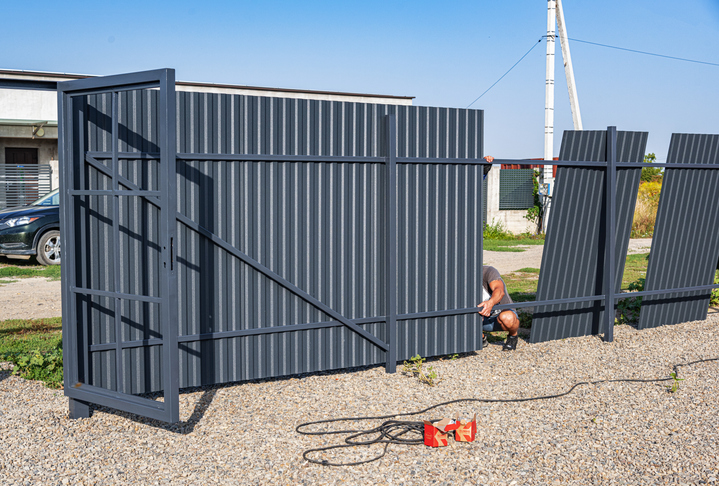
3. Fence Height Costs: Reaching New Heights While Mindful of Your Budget
When you’re planning to install a fence, height isn’t just a design choice—it also impacts your budget. Taller fences require more materials and labor, which makes them more expensive. Additionally, local regulations may limit how high your fence can be, so it’s important to check your area’s rules before starting.
Key Factors Influencing Fence Height and Overall Costs
- Material: The material you choose greatly influences the cost. Whether it’s wood, vinyl, or metal, taller fences require more of it, which increases the price.
- Labor: Building a taller fence is more labor-intensive. It’s not just about using extra materials—taller fences often require more precise work, which drives up labor costs
- Foundation: Tall fences need a sturdy foundation to stay stable, especially in windy areas. This might involve deeper posts or additional reinforcement, which adds to installation costs.
- Permits: Depending on your location, you may need a permit for a taller fence. Many municipalities have height restrictions, and exceeding those limits can result in fines or the need to adjust your fence after it’s built.
- Security: If you’re looking to enhance security, taller fences are a great deterrent. However, the added protection comes with higher material and labor costs.
Choosing the Optimal Fence Height: Privacy, Security, Aesthetics, and Budget
When deciding on fence height, consider what’s most important to you—privacy, security, or aesthetics. While taller fences offer more protection and privacy, they also affect the overall appearance of your property.
- Privacy: A taller fence will give you more privacy, especially if you’re in a high-traffic area or your neighbors are close by.
- Security: Taller fences are harder to scale, which makes them more effective at keeping unwanted visitors out.
- Aesthetics: While a tall fence can be functional, it also impacts your property’s look. Make sure the height complements your home’s style and fits with the surrounding neighborhood.
- Local Regulations: Before building, always check local laws to ensure your fence complies with height restrictions. It’s much easier to make adjustments before construction than after.
When I installed a fence at my home, I initially wanted a tall one for maximum privacy. But after reviewing the costs and local regulations, I chose a more moderate height that still provided the privacy I needed without breaking the budget or facing permit issues.
By taking into account costs, security needs, and any local regulations, you can choose the perfect fence height for your home and budget.
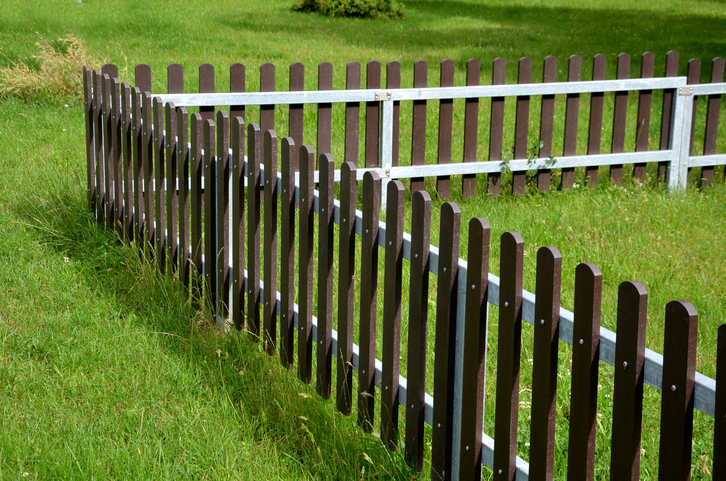
4. Fence Style and Design: Balancing Personalization with Costs
As a homeowner myself, I’ve seen firsthand how the style and design of a fence can significantly impact its overall appearance and cost. More elaborate designs, such as ornate wrought iron or custom-built picket fences, will generally be more expensive than simpler styles. Consider the overall aesthetic of your property and your personal preferences when choosing a fence style.
Popular Fence Styles and Their Cost Implications: From Classic to Modern:
- Picket fences: A classic choice, picket fences offer a clean, traditional look. They can range from simple white picket fences to more decorative designs with fancy details. I personally love the timeless charm of a white picket fence, but I know that some homeowners prefer a more modern or rustic style.
- Privacy fences: Privacy fences are designed to provide maximum privacy and security. They are typically taller and have solid panels, such as board-on-board or vinyl privacy fences. The cost of a privacy fence will depend on the material used, the height of the fence, and the length of the fence.
- Ornamental fences: Ornamental fences add a decorative touch to your property. They can be made of various materials, such as wrought iron, aluminum, or vinyl. The cost of an ornamental fence will depend on the material used, the complexity of the design, and the size of the fence.
- Chain-link fences: Chain-link fences are a popular choice for security and affordability. They are typically made of galvanized steel wire and are available in various heights and styles. The cost of a chain-link fence will depend on the height of the fence, the size of the fence, and the type of gate used.
Additional Design Choices and Their Impact on Your Final Cost:
- Color: The color of your fence can impact its overall look and cost. Some colors, such as custom colors or darker shades, may be more expensive.
- Gates: The number and style of gates you choose can also affect the cost of your fence. Double-swing gates or automatic gates will generally be more expensive than single-swing gates.
- Decorative elements: Adding decorative elements, such as lattice panels, flower boxes, or decorative hardware, can increase the cost of your fence.
When choosing a fence style, consider the overall aesthetic of your property and your personal preferences. It’s also important to weigh the cost of different styles against the benefits they offer, such as increased privacy, security, or curb appeal.
Remember, your fence is an investment that can enhance the value and appeal of your property. Take the time to choose a style that complements your home and meets your needs.
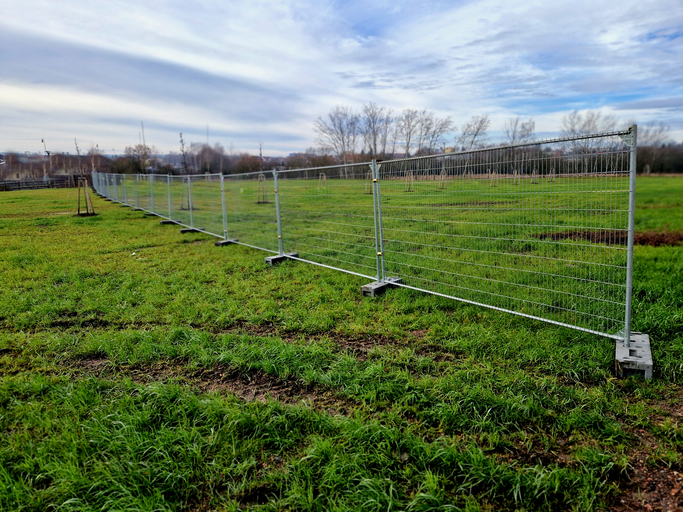
5. Labor Costs: A Major Factor in Your Total Fence Installation Bill
As a homeowner myself, I’ve seen firsthand how the cost of fence installation can vary significantly. By understanding the various factors that influence the cost, you can get a better estimate and make an informed decision about your fencing project.
Understanding the Labor Component of Fence Installation Costs
The cost of fence installation can vary significantly depending on several factors, including:
- Material: The type of material used for your fence, such as wood, vinyl, metal, or bamboo, will directly impact the cost.
- Size and length: The dimensions of your property and the desired perimeter will determine the overall length of the fence, which will affect the cost.
- Height: Taller fences require more materials and labor, increasing the cost.
- Style and design: The complexity of the design, including the number of posts, rails, and pickets, can influence the cost.
- Labor costs: The cost of labor will depend on your location, the contractor’s experience, the complexity of the installation, and the demand for fence installation services in your area.
- Additional factors: Other factors that can affect the cost include permits and inspections, site preparation, gate installation, and decorative elements.
Key Factors Driving Labor Costs for Fence Installation
Material:
- Wood: Cedar, redwood, and pressure-treated pine are common choices.
- Vinyl: Durable, low-maintenance option with a wide range of colors.
- Metal: Offers excellent security and durability, but can be more expensive.
- Bamboo: An eco-friendly alternative with a natural aesthetic.
Size and length:
- Property size: The dimensions of your property will determine the overall length of the fence.
- Desired perimeter: The amount of your property you want to enclose will influence the length of the fence.
Height: Taller fences require more materials and labor, increasing the cost.
Style and design:
- Picket fences: A classic choice with a clean, traditional look.
- Privacy fences: Designed to provide maximum privacy and security.
- Ornamental fences: Add a decorative touch to your property.
- Chain-link fences: A popular choice for security and affordability.
Labor costs:
- Location: Labor rates may differ depending on your geographic location and the local cost of living.
- Experience and expertise: Contractors with more experience and expertise may charge higher rates.
- Complexity of installation: The terrain, existing structures, and other factors can increase labor costs.
- Demand: Labor costs may be higher during peak seasons or in areas with high demand for fence installation.
Additional Factors Contributing to Your Total Fence Installation Bill
- Permits and inspections: Obtaining necessary permits and inspections can add to the overall cost.
- Site preparation: Clearing the area for fence installation, such as removing existing structures or leveling the ground, may incur additional costs.
- Gate installation: Adding gates to your fence will increase the cost, especially for custom-made or automated gates.
- Decorative elements: Features such as post caps, decorative hardware, or lighting can add to the overall cost.
Tips for Minimizing Fence Installation Costs: DIY vs. Hiring a Pro, Material Choices, Negotiation, and Seasonal Timing
- Shop around: Get quotes from multiple contractors to compare prices and services.
- Consider DIY installation: If you have the skills and time, DIY installation can save you money on labor costs.
- Opt for lower-cost materials: Explore more affordable options for materials without sacrificing quality.
- Negotiate with contractors: Don’t be afraid to negotiate for a better price.
- Consider seasonal discounts: Some contractors may offer discounts during off-peak seasons.
Conclusion
As a homeowner myself, I’ve seen firsthand how the cost of fence installation can vary significantly. By understanding the various factors that influence the cost, you can get a better estimate and make an informed decision about your fencing project.
Remember, the key to saving money on fence installation is to shop around, consider doing it yourself, explore cheaper materials, negotiate with contractors, and be mindful of seasonal discounts. Additionally, prioritize your needs and set a realistic budget to ensure you get the best value for your investment.
We encourage you to share your experiences with fence installation in the comments section below. Your insights can be valuable to other homeowners who are planning similar projects. Feel free to ask any questions you may have, and we’ll do our best to provide helpful answers.
When I was planning my fence installation, I found that doing some of the work myself, such as digging the holes for the posts, helped me save a significant amount of money. I also negotiated with the contractor for a better deal by mentioning that I had found similar quotes from other companies. By taking a proactive approach, I was able to get a high-quality fence at a price that fit my budget.

